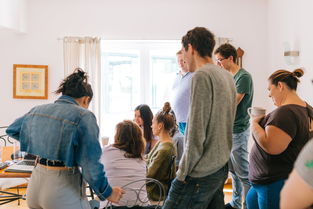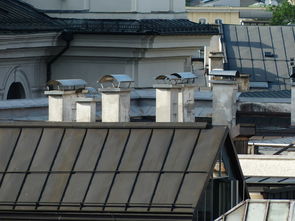Vietnam is a vibrant country that captivates the world with its rich cultural tapestry, steeped in history and tradition. From its unique festivals to its intricate cuisine, Vietnam's culture is a fascinating blend of influences that tell a story of resilience, community, and creativity. In this article, we'll take a closer look at some key elements of Vietnamese culture, exploring why it matters, how it's used, and what impact it has on both locals and visitors.
The Essence of Vietnamese Culture
Imagine stepping into a garden where every plant and flower holds a story. This is Vietnam’s culture—a dynamic mix of influences shaped by centuries of history, geography, and interactions with various cultures. At the heart of Vietnamese culture are values like respect for elders, strong family ties, and the pursuit of harmony with nature. These core principles not only shape daily life but also define the way people interact within their communities and even beyond.
Celebrating the Spirit of Festivals
One of the most captivating aspects of Vietnamese culture is its vibrant festivals, which provide a window into its traditions and beliefs. The Tet Nguyen Dan (Lunar New Year) is one such celebration that brings together families for feasts and fireworks. Picture this: the streets are filled with the aroma of traditional dishes like bánh chưng, a sticky rice cake wrapped in leaves. The sight of vibrant dragon dances and the sound of firecrackers fill the air, marking the end of the old year and the beginning of a new one.
Another important festival is Mid-Autumn Festival (Tet Trung Thu), which focuses on family reunions under the full moon. Imagine lanterns swaying gently in the night, children running with lion dance performers, and parents sharing stories while enjoying sweet mooncakes. These festivals aren’t just about tradition; they’re about fostering connections and passing down values from one generation to the next.
Culinary Delights: A Feast for the Senses
Vietnamese cuisine is not just delicious—it’s a sensory experience. The dish phở is a prime example of this. Picture steaming bowls of clear broth, garnished with fresh herbs, bean sprouts, and slices of meat. Each ingredient adds a layer of flavor, much like the layers of a painting, coming together to create a masterpiece on your plate. This dish is a metaphor for the complexity and beauty of Vietnamese culture itself—rich, varied, and full of contrasts.
Another staple is bánh mì, the famous Vietnamese sandwich. Think of it as a culinary representation of Vietnam’s history: a fusion of French and local influences, where crispy bread is layered with pâté, pickled vegetables, and fresh herbs. Just as bánh mì reflects the blending of cultures, so does Vietnamese society, which has absorbed foreign influences while maintaining its unique identity.
Family and Community: Pillars of Strength
In Vietnamese culture, family and community are paramount. Imagine a family meal where everyone gathers around the table, sharing stories and laughter. This scene is common in Vietnamese homes, where meals aren't just about sustenance—they're about bonding. The concept of "tình thân" (close relationships) extends beyond blood relatives to include friends, neighbors, and even strangers in need.

Vietnamese society emphasizes the importance of social harmony and collective welfare. This means putting the group before the individual. Picture a neighborhood coming together to build a communal house or organize a village festival. Such practices not only strengthen bonds but also reinforce the idea that everyone has a role to play in maintaining social order and happiness.
Art and Architecture: Stories in Stone and Brush
Vietnamese art and architecture are a testament to the country's historical and spiritual richness. The ancient city of Hoi An, with its well-preserved buildings, stands as a living museum. Imagine walking through narrow cobblestone streets lined with colorful lanterns, where each building tells a story of past dynasties. The iconic Cham Towers, located in the Central Highlands, are another example of architectural heritage. They represent a blend of indigenous and Indian influences, reflecting Vietnam’s long-standing connections with other cultures.
Traditional arts such as silk painting, pottery, and calligraphy also play a crucial role in preserving and expressing cultural identity. Silk paintings often depict scenes from nature or historical events, while pottery reveals patterns inspired by daily life and spiritual beliefs. Calligraphy, in particular, is highly valued as a form of communication and expression, where characters become works of art in themselves.
Modern Influences and Global Connections
Vietnam's cultural landscape isn’t static—it's continuously evolving. With globalization, Western influences have become more visible, yet traditional values remain deeply rooted. For instance, young Vietnamese artists are blending modern techniques with traditional mediums, creating a unique fusion of styles. Meanwhile, international cuisine and fashion have found a place in urban areas without overshadowing the local food scene.
This adaptability showcases the resilience and openness of Vietnamese culture. It demonstrates how traditions can coexist with innovation, fostering a dynamic environment where new ideas and old customs can thrive together. Just as the mighty Mekong River embraces diverse tributaries, Vietnam’s culture continues to flow, incorporating new elements while retaining its essence.
Embracing Diversity: A Cultural Kaleidoscope
In today’s interconnected world, understanding and embracing diversity is more important than ever. Vietnam’s rich cultural heritage serves as a model for how different elements can come together harmoniously. By appreciating the multifaceted nature of Vietnamese culture, we can foster greater empathy and respect for others' backgrounds and perspectives.
Imagine walking through a bustling market in Hanoi, surrounded by a symphony of sounds, colors, and scents from all corners of the country. Each vendor brings a piece of their hometown to share, creating a vibrant mosaic that represents the whole of Vietnam. This scene is a powerful reminder that diversity enriches our experiences and strengthens our communities.
Conclusion: A Journey Through Time
Vietnamese culture is a treasure trove waiting to be explored, offering insights into the human spirit and the universal quest for connection. From its colorful festivals to its savory cuisine, its strong family values to its rich artistic expressions, Vietnam’s culture is a living, breathing entity that evolves with each passing day. As you journey through this enchanting landscape, may you find inspiration, appreciation, and a deeper understanding of the enduring legacy of Vietnamese culture.
Vietnamese Language Version
Hiểu Về Khăn Thổ Cẩm Văn Hóa Việt Nam Đa Dạng
Việt Nam là một đất nước sôi động thu hút thế giới với nền văn hóa đa dạng phong phú, thấm đượm lịch sử và truyền thống. Từ những lễ hội độc đáo đến ẩm thực tinh tế, văn hóa Việt Nam là sự pha trộn của nhiều ảnh hưởng, kể lại câu chuyện về sức sống mãnh liệt, cộng đồng và sáng tạo. Trong bài viết này, chúng ta sẽ tìm hiểu về các yếu tố quan trọng của văn hóa Việt Nam, khám phá tại sao nó lại quan trọng, cách sử dụng trong đời sống hàng ngày và tác động của nó lên cả người dân địa phương lẫn du khách.
Tinh Hoa của Văn Hóa Việt Nam
Hãy tưởng tượng mình đang bước vào một khu vườn mà mỗi cây và bông hoa đều chứa đựng một câu chuyện. Đó chính là văn hóa Việt Nam - sự pha trộn độc đáo của nhiều ảnh hưởng được hình thành bởi hàng trăm năm lịch sử, địa lý và giao lưu với các nền văn hóa khác nhau. Ở trung tâm của văn hóa Việt Nam là các giá trị như tôn trọng người già, mối quan hệ gia đình chặt chẽ và việc tìm kiếm hòa quyện với thiên nhiên. Những nguyên tắc cốt lõi này không chỉ định hình cuộc sống hàng ngày mà còn xác định cách mọi người tương tác trong cộng đồng của họ.
Lễ Hội: Linh Hồn của Văn Hóa Việt Nam
Một trong những khía cạnh thú vị nhất của văn hóa Việt Nam là những lễ hội rực rỡ, mang đến cái nhìn sâu sắc về truyền thống và niềm tin của họ. Tết Nguyên Đán là một trong những lễ hội đó, kết hợp các gia đình trong những bữa tiệc và pháo hoa. Hãy tưởng tượng đường phố đầy hương thơm của những món ăn truyền thống như bánh chưng, một chiếc bánh dày bọc lá. Khung cảnh những màn múa rồng rực rỡ và tiếng pháo nổ khắp nơi đánh dấu sự kết thúc của năm cũ và khởi đầu của năm mới.
Lễ hội Trung Thu (Tết Trung Thu) là một lễ hội khác tập trung vào việc đoàn tụ gia đình dưới ánh trăng tròn. Hãy tưởng tượng những chiếc đèn lồng lắc lư nhẹ nhàng trong đêm tối, trẻ em chạy theo những người biểu diễn múa sư tử và cha mẹ kể chuyện trong khi thưởng thức bánh trung thu ngọt ngào. Những lễ hội không chỉ là truyền thống; chúng còn tạo dựng kết nối và chuyển giao giá trị từ thế hệ này sang thế hệ khác.
Ẩm Thực: Một Bữa Tiệc Cho Các Cảm Giác
Ẩm thực Việt Nam không chỉ ngon miệng - nó còn là một trải nghiệm giác quan. Món phở là một ví dụ điển hình về điều này. Hãy tưởng tượng những bát phở nóng hổi với nước dùng trong veo, được trang trí bằng các loại thảo mộc tươi và rau cải. Mỗi thành phần thêm một lớp hương vị, giống như các lớp của một bức tranh, tạo nên một tác phẩm nghệ thuật trên chiếc đĩa của bạn. M









